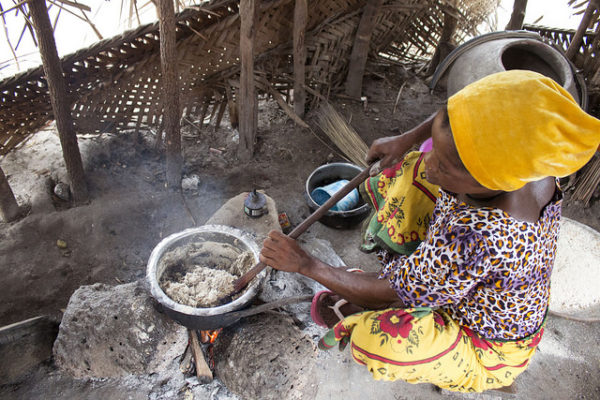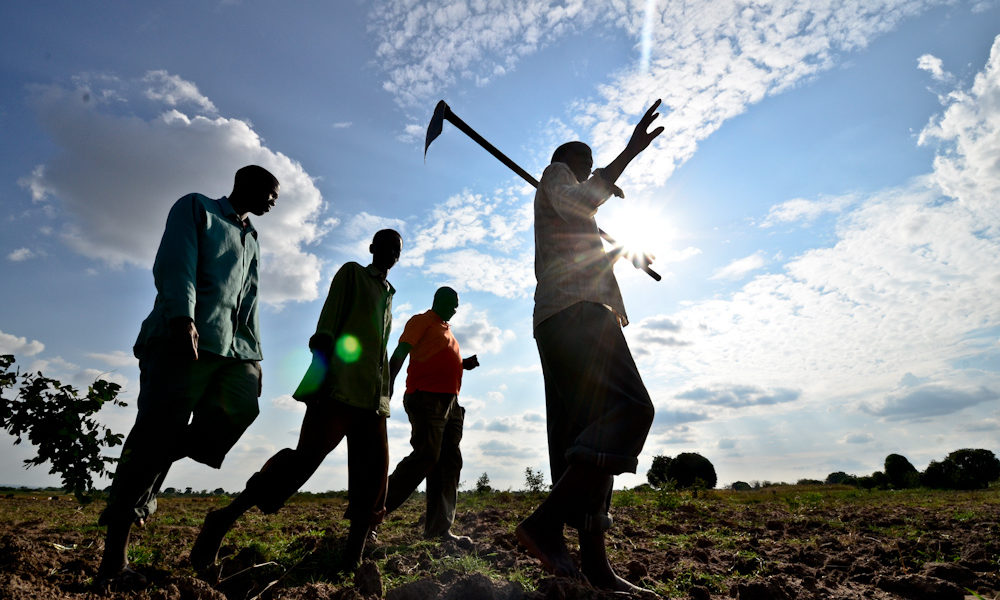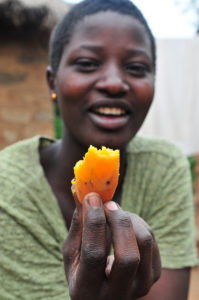The dual focus of Flagship Project 2 (FP2) includes using innovative methods to develop varieties of roots, tubers and bananas exhibiting desirable traits and on making available to farmers an array of high-quality planting materials of these crops.
The team behind this flagship is using new methods to speed up the development of varieties which match smallholders’ planting preferences and the needs of different stakeholders, says Elmar Schulte-Geldermann, who directs the International Potato Center’s Seed Potato for Africa programme and leads FP2 Adapted Productive Varieties and Quality Seed.
“There are several logistical challenges in RTB seed systems due to the perishability and the bulkiness of the planting material,” says Schulte-Geldermann. Other issues with which FP2’s researchers must contend: low multiplication rates, limited private-sector involvement, lack of appropriate seed quality control schemes, and more.
Yet despite these challenges, examples abound of crop varieties that have been successfully bred for increased disease- or pest-resistance. Schulte-Geldermann points to a few:
- Banana hybrids that are genetically close to dessert bananas and exhibit resistance to black sigatoka and fusarium
- Cassava varieties that combine resistance/tolerance to Cassava Brown Streak Virus Disease, Cassava Mosaic Disease and Cassava Bacterial Blight
- The Unica potato, which displays not only good late blight and virus resistance but also increased drought tolerance
- Several Orange Fleshed Sweetpotato varieties that have been successfully bred for greater resistance to multiple viruses, high dry matter content, as well as Vitamin A availability
These successes could not have been achieved in the absence of “a good understanding of market-preferred traits and good knowledge of target agro-ecologies related to disease resistance and climate adaptability,” he adds. “It is of major importance to consider all of this in the breeding process.”
Cultivating social and cultural acceptance of these and other emerging varieties is a critical prong of this project. Among the factors that might spur a smallholder to reject or accept a variety new to him or her: the plant’s suitability for traditional utilization; the time required to boil it; its overall taste; its suitability for low-input conditions; the color of its flesh and skin, especially if it’s unfamiliar; and other variables.

Cassava flour and water are heated and mixed together to create ‘ugali’ in Tanzania. The crop traits that men and women prefer are often influenced by their roles at home and in the community. Photo H.Holmes/RTB
Moreover, as with all the flagships in RTB Phase II, the differing roles of women and men in seed production must be considered. Gender-related roles and responsibilities across all links of the value chain have too often been neglected, Schulte-Geldermann notes.
“Gender differences can be found across all production and marketing steps,” he says. Consider that women typically have less access to both land and to money than do men, or that market-oriented crops are usually handled more by men and food crops more by women, who tend to do more food preparation. That said, the woman harvesting or cooking a given crop will have strong opinions about how long it takes to cook, how it tastes, how perishable it is in the heat and other determinants. Over time, these preferences can shape the degree to which a new variety is rejected or accepted.
Researchers can ill-afford to overlook gender-based differences, nor can they ignore consumer preferences around crops’ shelf life, yield, and adherence to long-standing cultural values. “Formal cultivar selection and crop improvement too often focuses [solely] on yield and/or disease resistance,” he says. In order to for FP2 researchers to better grasp the criteria used by smallholders as they accept or reject a specific cultivar, “participatory rural appraisal tools will be used to identify, prioritize and document the needs and preferences of different actors along the value chain.”
Schulte-Geldermann cites examples of how all of the other flagships overlap with and complement the research occurring within FP2’s clusters. For example, the biofortification work taking place in FP1 Enhanced Genetic Resources, will be continuously validated and used in FP2. In the same vein, efforts to improve early detection of crop pests and diseases that is central to the aims of FP3 Resilient Crops – invariably inform FP2 researchers’ work.
The more that new varieties take hold within a region or a culture, the more likely the ecological, environmental and other benefits of greater species diversity become apparent.
“The effects of climate change and expression of diseases are likely to differ among regions and agro-ecologies,” Schulte-Geldermann explains. “Therefore, strengthening regional breeding hubs that focus on traits of regional importance need to be closely linked with global collections for recurrent introduction of new traits to their breeding populations.”
The interconnectedness among global regions – and among established and emerging RTB crops themselves – underscore in a powerful way the means by which greater plant diversity benefits us all.
This is the fourth in a series of blogs showcasing the new Flagship Projects of the CGIAR Research Program on Roots, Tubers and Bananas. The next edition will examine Flagship 1 on ‘Enhanced genetic resources’. By Amy Rogers Nazarov


